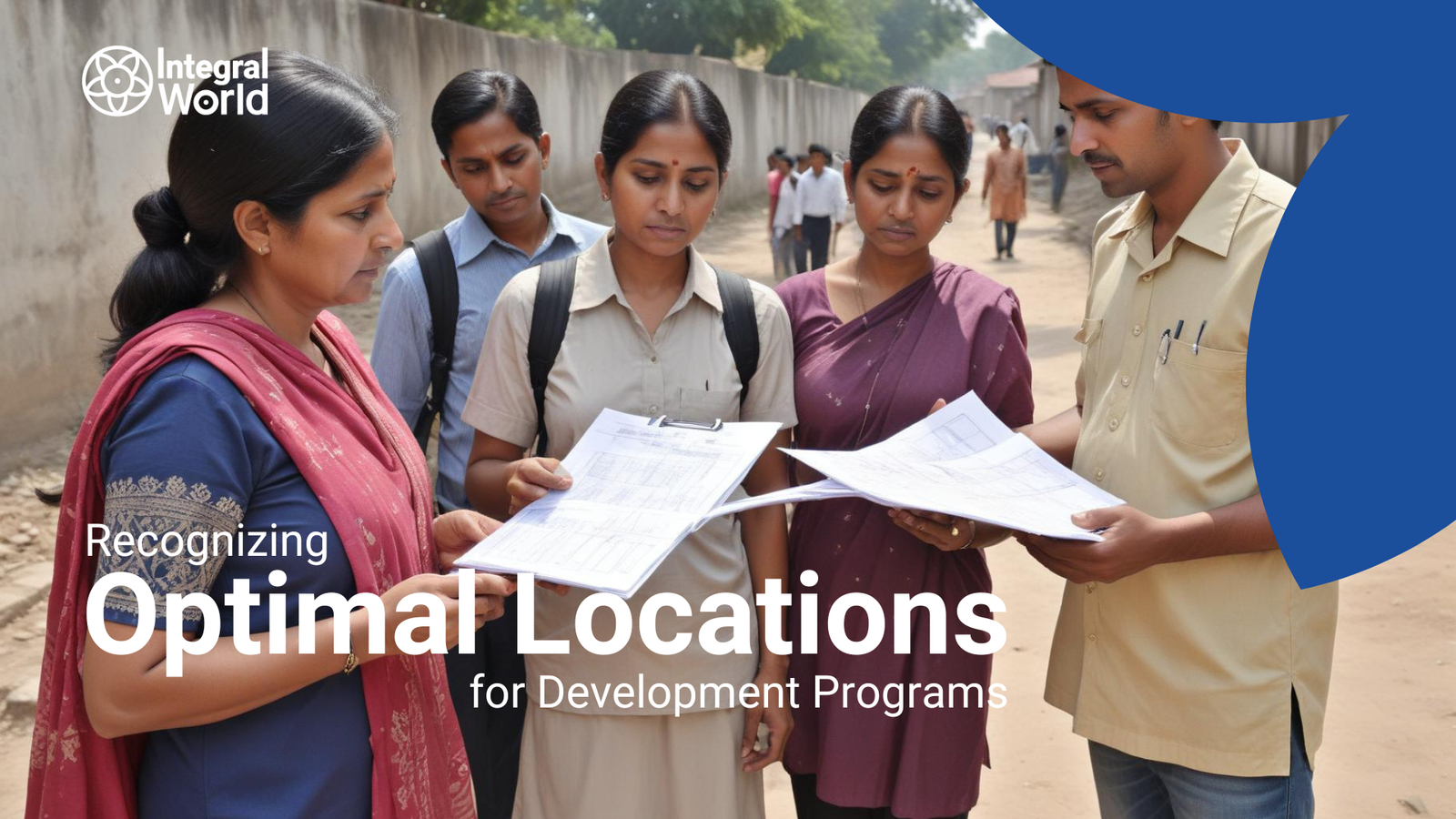Choosing the right location for Development programs does not have anything directly to do with geography; it requires strategic decision making that can be very significant, affecting both performance and sustainability of initiatives aimed at promoting positive change.
At Integral World, which focuses on a holistic development approach, we understand successful location selection entails using a combination of data-driven analysis, engagement with communities as well as deep understanding of local issues. These tactics provide practical guides, examples from real life experiences and professional opinions so that companies can make proper choices when deciding where to locate their projects.
Where development programs will be placed determines how useful they are going to be and how long they shall last. The situation influences accessibility or remoteness of resources needed for intervention such us resourcefulness or impact into socio-economic realities within a community. Being knowledgeable in this area allows individuals working in such organizations navigate through complicated processes associated with such decision making guaranteeing broad buy-in across global results-based measures (such as MDGs) while reflecting specific national aspirations.
Factors Influencing Optimal Location Selection
1. Geographical Considerations
Geography is fundamental to the context of development programs. Factors such as climate patterns, terrain characteristics, and natural resource availability can dictate the types of interventions that are feasible and sustainable. For instance, coastal regions prone to flooding may require disaster preparedness programs, while arid areas might benefit from water conservation and agricultural resilience projects.
2. Socio-Economic Context
To target interventions effectively, one must understand the socio-economic environment in which they will be implemented. Community resilience and preparedness for development projects depend on variables including income levels, educational rates, healthcare access etc. By doing thorough socio-economic assessments, agencies are able to identify their priorities within a given area where they can make significant improvements over a reasonable period.
Expert Insight: Dr. Maria Sanchez
Dr. Maria Sanchez a renowned development strategist emphasizes that “successful location selection in development requires understanding local socioeconomic dynamics.” The emphasis should not only be on identifying needs but also supporting people who live in these places since they should actively participate in their own growth process.

Strategies for Identifying Optimal Locations
1. Needs Assessment and Stakeholder Engagement
The foundation of effective location selection lies in strong needs assessments along with genuine stakeholder engagements. With insights into community priorities, cultural subtleties or existing capacities acquired when interacting with locals national officials plus non-profit sector these organizations ensure that whatever help will not be out of place or without being accepted by those who need it most among others around them as part of our participatory approach to the problem solving initiative ultimately targeting communities at large.
2. DATA-DRIVEN DECISION MAKING
Real-World Example: Through their application of GIS technology at its Global Health Division, The Bill & Melinda Gates Foundation demonstrates how effective location selection is done. By mapping disease prevalence rates alongside health care deficiencies, the organization can focus on areas with high level of health discrepancies for targeted interventions thereby improving global health outcomes.
Case Studies of Successful Location Selection
1. Case Study: World Wildlife Fund (WWF)
Strategic location selection based on ecological significance and biodiversity hotspots characterizes WWF’s conservation efforts. WWF achieves this by focusing on regions that host endangered species and critical habitats while being community friendly in eco-system preservation.
2. Case Study: UNICEF
Adaptive location selection during humanitarian response operations as exemplified by UNICEF is important in conflict situations. UNICEF rapidly identifies patterns of displacement as well as needs for healthcare and child protection risks to offer emergency interventions in conflict zones as well as disaster hit areas where they protect vulnerable people from harm and encourage resilience.
Expert Strategies for Effective Location Selection
1. Consider Long-Term Sustainability
Sustainable development depends on locations that promote environmental stewardship, economic prosperity, and social justice. Therefore, to ensure future generations benefit, we must actively include sustainability concerns in the criteria for selecting areas, preserving natural resources and cultural heritage.
2. Adaptability to Changing Conditions
During site selection process organizations have to bear in mind that socio-economic realities together with geopolitical shifts or environmental changes may necessitate rethinking such strategies; this implies a flexible attitude. Development projects will remain relevant and sustainable when designed to address current challenges like climate change, migration, and recession.
Conclusion: Empowering Communities through Strategic Location Selection
The process of identifying the most suitable locations for development programs involves a combination of strategic foresight, community involvement, and adaptive management. As an organization that has been in existence for twenty-five years and has chosen to concentrate strictly on this sector, Integral World is committed to leading firms through this complex maze by leveraging on our expertise in order to inform decision making processes as well as enhance global outcomes through sustainable development.
To explore how we create meaningful change in communities throughout the world via a targeted approach to location selection contact Integral World now. By doing so together we shall navigate the complexities of global development issues.


1 Comment
Strands Hint very informative articles or reviews at this time.
Comments are closed for this article!